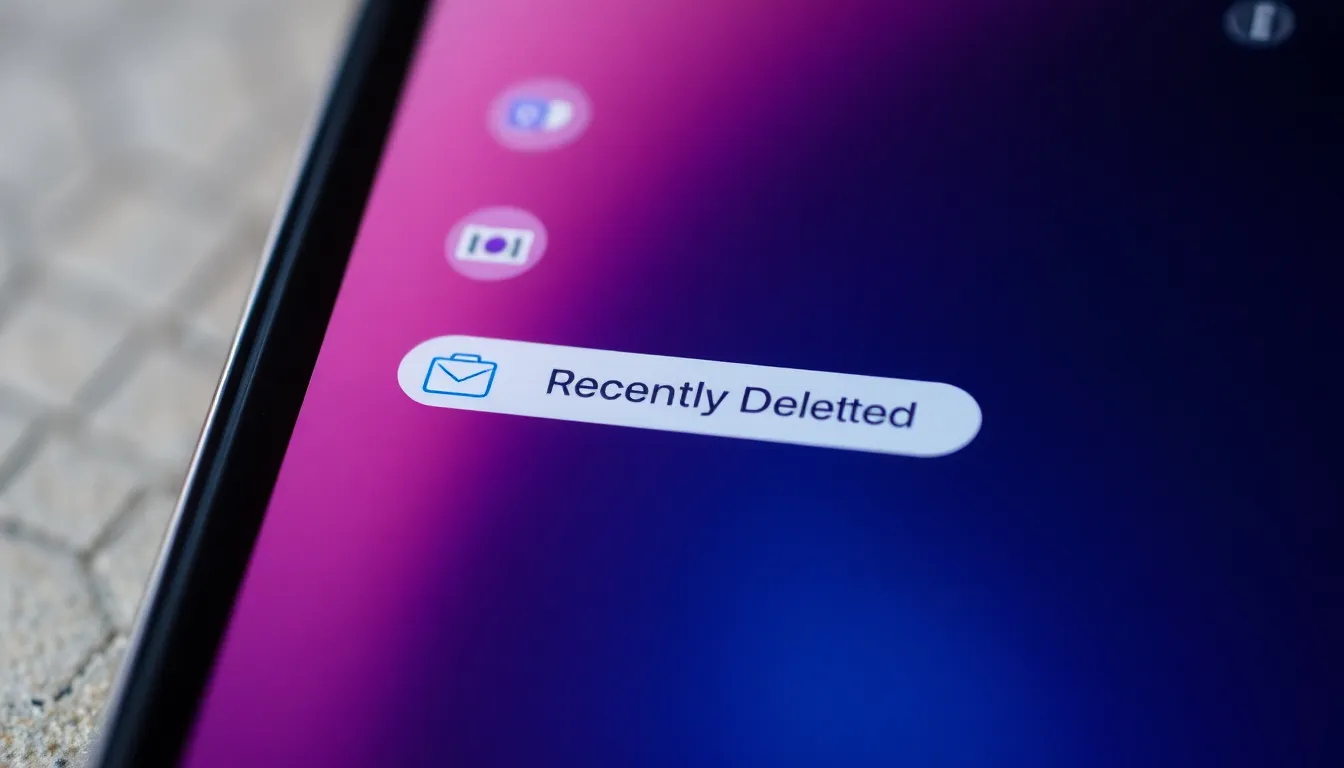Ever accidentally deleted a message that contained the recipe for Grandma’s famous cookies or your best friend’s hilarious meme? It happens to the best of us. With iPhones, those pesky deleted messages might not be as gone as they seem. The good news is there’s a way to retrieve them, and it’s easier than finding your phone in the couch cushions—trust us!
In this guide, you’ll discover how to show recently deleted messages on your iPhone. Whether you’re on a mission to recover sentimental texts or just want to relive that epic conversation, you’re in the right place. So grab your iPhone, and let’s dive into the world of message recovery—because who doesn’t love a good comeback story?
Table of Contents
ToggleOverview of Recently Deleted Messages on iPhone
Recently deleted messages on an iPhone aren’t permanently gone. Instead, Apple provides a temporary storage feature for recovered messages. This feature enables users to retrieve messages for up to 30 days after deletion.
Users can access recently deleted messages through the Messages app. By navigating to the appropriate section, they uncover text conversations and multimedia files. Accessible data includes SMS, iMessages, and attachments such as images or videos.
Recovering messages becomes straightforward with the right steps. Following a few simple instructions, individuals regain their deleted content without extensive effort. Users simply need to find the dedicated folder for recently deleted messages within the app.
It’s important to note that once the 30-day window expires, deleted messages become irretrievable. At that point, users can’t access this content through the iPhone or any backup unless comprehensive data recovery software becomes an option.
The process hinges on the iPhone’s built-in features. Users enable these settings through their iCloud accounts, allowing for seamless recovery when needed. Keeping software updated enhances overall performance and ensures smooth access to recovery options.
Many iPhone users overlook the potential of recently deleted messages. With careful navigation and an understanding of available features, reclaiming lost conversations becomes achievable. This simple process helps maintain connections and preserve memories.
Accessing the Messages App

Accessing the Messages app is essential for retrieving recently deleted messages on an iPhone. Users can quickly navigate to their text conversations and multimedia files, making the recovery process straightforward.
Navigating the Interface
Navigating the Messages app starts with tapping the app icon on the home screen. Users then see a list of conversations, which includes both SMS and iMessages. Swiping left reveals additional options for each conversation, including messages marked for deletion. It’s crucial to familiarize oneself with the layout to efficiently locate needed messages. Understanding the app’s interface enhances the recovery experience.
Finding the Deleted Messages Folder
Finding the deleted messages folder requires users to follow a few simple steps. They start by tapping on the “Messages” screen. Users should look for a folder labeled “Recently Deleted.” This folder contains messages that were deleted within the last 30 days. Each message in this section is still recoverable. By selecting the desired message, users can easily restore it back to their main conversation list.
Recovering Deleted Messages
Recovering deleted messages on an iPhone is a manageable process. Users can utilize two primary methods: accessing the Recently Deleted folder and leveraging iCloud Backup.
Restoring from the Recently Deleted Folder
Restoring messages from the Recently Deleted folder requires a few simple steps. First, access the Messages app. Then, tap the Conversations list to locate the “Recently Deleted” folder. Within this folder, users can view messages that were deleted within the last 30 days. Selecting the desired message allows for its restoration back to the main conversation list. This handy feature ensures users can quickly reclaim important texts or images without complicated processes.
Using iCloud Backup
Using iCloud Backup provides another robust option for message recovery. When iCloud is enabled, users can recover not just texts but also various data types. Users should navigate to Settings, tap on their name, and select iCloud. By ensuring Messages are included in the backup, users can retrieve lost conversations. To restore, accessing Settings once more and choosing “General” followed by “Reset” leads to the “Erase All Content and Settings” option. After this, choosing “Restore from iCloud Backup” reinstates messages along with other data from the last backup point.
Alternative Methods for Message Recovery
Users can explore additional options for retrieving deleted messages on their iPhones. Sometimes, deleted messages can become accessible through alternative means beyond the standard features.
Third-Party Recovery Tools
Numerous software solutions exist for recovering deleted messages on iPhones. Tools like Dr.Fone, iMobie PhoneRescue, and Tenorshare UltData specialize in message recovery, offering users varying success rates. Often, these applications allow users to scan their iPhones for recoverable data. Implementing these tools typically requires connecting the iPhone to a computer and performing a scan. Users should examine reviews and ensure software reliability before downloading. Costs for these tools can vary, so comparing options helps in choosing the best fit.
Contacting Apple Support
Users experiencing difficulties with message recovery should consider reaching out to Apple Support. Apple representatives can provide personalized assistance tailored to individual issues. Typically, they guide users through recovery processes or suggest additional steps. Explaining specific problems clearly often leads to effective solutions. Before contacting support, users should gather relevant information, such as iOS versions and troubleshooting steps already attempted. Having this information can enhance the support experience and facilitate resolution.
Tips for Preventing Message Loss
Regular backups protect important messages. Users can enable automatic backups via iCloud to ensure conversations remain secure. Frequent updates also enhance device performance, minimizing potential data loss. Keeping the software current helps prevent accidental deletions.
Utilizing third-party apps provides additional security. Specific apps allow users to create backups of texts, photos, and other important data. These apps often offer user-friendly interfaces for easy navigation and recovery options. Researching reliable third-party tools ensures users choose solutions that meet their needs.
Advice on organizing messages can also reduce the risk of loss. Creating folders for crucial conversations enables easier access and minimizes the chances of accidental deletion. Engaging with conversations only when necessary helps maintain better control over message retention.
Configuring notification settings assists in keeping track of important messages. Users can prioritize essential contacts and enable alerts for their messages. This focused approach ensures crucial texts don’t get overlooked.
Opting for diligent storage habits adds another layer of protection. Regularly reviewing and purging unnecessary messages prevents clutter and enhances message visibility. Users can establish a routine for checking message storage and maintaining only what’s essential.
Overall, these strategies foster a proactive approach to managing messages. By implementing these preventative tips, users enhance their ability to retain meaningful conversations, minimizing the risk of losing important information.
Recovering recently deleted messages on an iPhone can be a straightforward process if users know where to look. By utilizing the Recently Deleted folder or iCloud Backup, users can reclaim valuable conversations and cherished memories. It’s essential to act within the 30-day recovery window to maximize the chances of retrieval.
For those who need additional support or encounter challenges, exploring third-party recovery tools or reaching out to Apple Support can provide further assistance. Implementing regular backups and keeping software updated are proactive steps that can help prevent future message loss. By following these strategies, users can safeguard their important communications and enjoy peace of mind.




